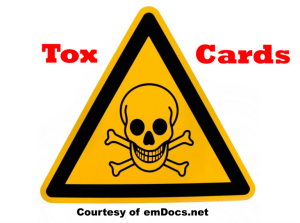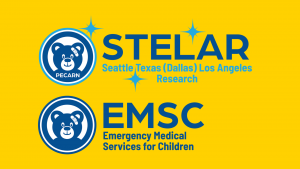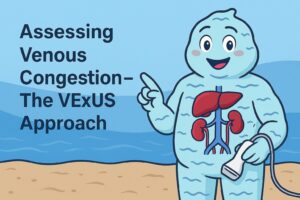We always work hard, but we may not have time to read through a bunch of journals. It’s time to learn smarter.
Originally published at JournalFeed, a site that provides daily or weekly literature updates.
Follow Dr. Clay Smith at @spoonfedEM, and sign up for email updates here.
#1: Does HINTS Miss Stroke?
Spoon Feed
The HINTS exam alone, when assessed by emergency physicians in patients with acute vestibular syndromes (AVS), was not sufficient to rule out a central cause for vertigo. Have a low threshold to obtain MRI in patients with AVS and stroke risk factors.
Why does this matter?
The HINTS exam has been touted as an effective and accurate way to detect vertebrobasilar stroke vs a peripheral vertigo syndrome. See the Newman-Toker article. In the hands of a neuro-ophthalmologist, that may be true. How do emergency physicians do with HINTS?
HINT – be careful with this
This was a meta-analysis of 5 studies of patients with vertigo who had a HINTS exam as part of the workup and CT or MRI as the gold standard. For studies with only neurologists or neuro-ophthalmologists performing the HINTS exam, pooled sensitivity and specificity were 96.7 (93.1-98.5) and 94.8 (91-97.1), respectively. However, the only study which included both emergency physicians and neurologists had lower sensitivity and specificity: 83.3 (63.1-93.6) and 43.8 (36.7-51.2), respectively. Overall, quality of the studies was low, with all at risk of several biases: verification bias, spectrum bias, and detection bias, all of which would inflate sensitivity and specificity.
Source
Can emergency physicians accurately rule out a central cause of vertigo using the HINTS exam? A systematic review and meta-analysis. Acad Emerg Med. 2020 Mar 13. doi: 10.1111/acem.13960. [Epub ahead of print]
Open in Read by QxMD
#2: LOCO2 – Was Target SpO2 Too Low?
Why does this matter?
We know hyperoxia is bad: Oxygen-ICU; IOTA; ICU-ROX (null result); massive observational study lacking cool title in Chest; and yet another study with no snappy acrostic in Am J Respir Crit Care Med. We know hypoxia is also bad. What is the goldilocks SpO2 goal? Hint, I think the Chest study has the answer: 94-98%. Anyway, what did this loco study find?
It’s LOCO 2 go that low…
This was a multi-center RCT enrolling 205 patients with ARDS, with a “conservative” group targeting PaO2 55-70 mm Hg (SpO2 88-92%) and a “liberal” group targeting PaO2 90-105 mm Hg (SpO2 ≥96%). The study was stopped early by the data safety monitoring board because it appeared there was higher mortality in the conservative oxygen group. For the primary outcome of 28-day mortality, 34.3% had died in the conservative group vs 26.5% for the liberal group, a non-significant mortality increase of 7.8% (95%CI -4.8 to 20.6). At 90 days, mortality was 44.4% in the conservative group vs 30.4% in the liberal, for a mortality increase of 14.0% (95%CI 0.7 to 27.2). Five patients in the conservative group developed mesenteric ischemia. There was also possible signal that the conservative oxygen group may have more arrhythmia, atrial fibrillation, and other events leading to treatment, though this was not statistically significant. It seems we now know how low is too low. Just go with what Chest found and target 94-98%.
Source
Liberal or Conservative Oxygen Therapy for Acute Respiratory Distress Syndrome. N Engl J Med. 2020 Mar 12;382(11):999-1008. doi: 10.1056/NEJMoa1916431.
Open in Read by QxMD
Spoon Feed
Patients with severe renal dysfunction receiving high-dose cefepime may have higher risk of cefepime-associated neurotoxicity (CAN).
Why does this matter?
I was not aware of this potential adverse effect. “Cefepime is a widely used antibiotic with neurotoxicity attributed to its ability to cross the blood–brain barrier and exhibit concentration-dependent ϒ-aminobutyric acid (GABA) antagonism. Neurotoxic symptoms include depressed consciousness, encephalopathy, aphasia, myoclonus, seizures, and coma.” From Critical Care. Who is at risk for this?
Kick the CAN
This was a retrospective review of 200 critically ill patients with impaired renal function who received cefepime. The overall incidence of CAN was 6.5%. There was numerical but not statistical difference in high-dose vs low-dose: 10% vs. 4%, OR 2.82 (0.84-9.48). There were just 5 patients in the high-dose group who also had severe renal dysfunction. There were more cases of CAN in this group with severe renal dysfunction, but this was not statistically significant: 0% low-dose vs. 16% high-dose, p=0.064. This study can only suggest that higher dose and poorer renal function are risk factors. I included it because I was unaware of this side effect of cefepime and wanted to learn more. I hope this will add to your differential diagnosis.
Source
Effect of Cefepime on Neurotoxicity Development in Critically Ill Adults with Renal Dysfunction. Chest. 2020 Mar 5. pii: S0012-3692(20)30429-3. doi: 10.1016/j.chest.2020.01.051. [Epub ahead of print]
Open in Read by QxMD








